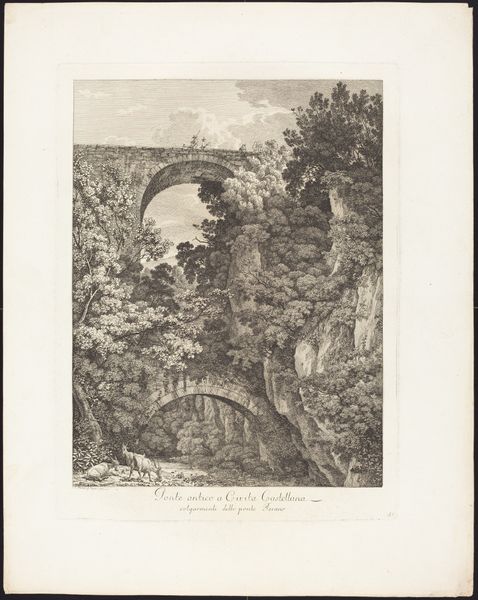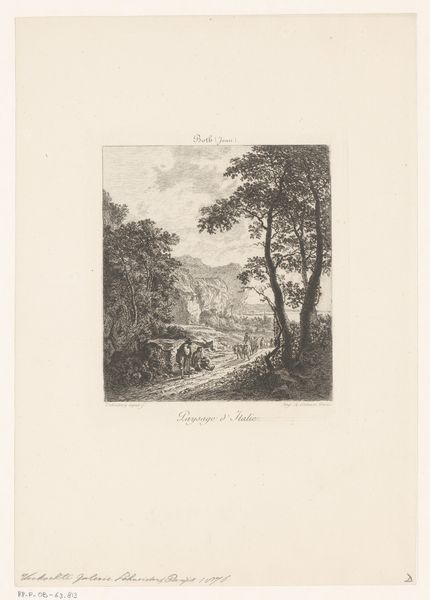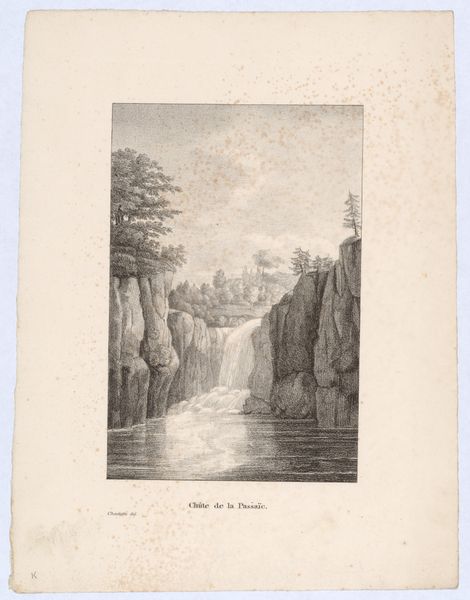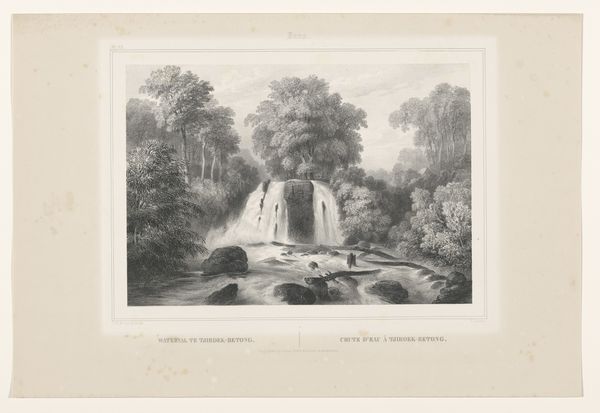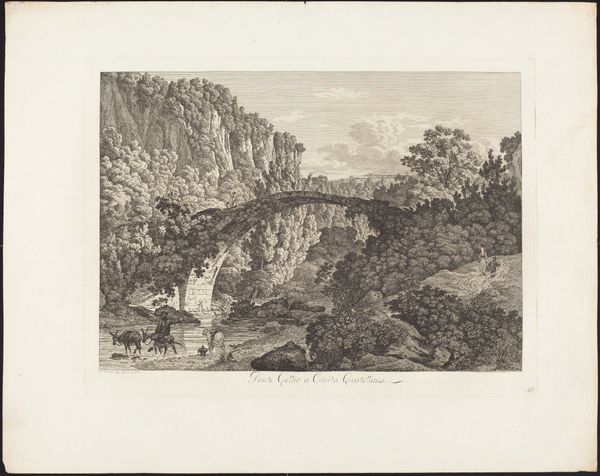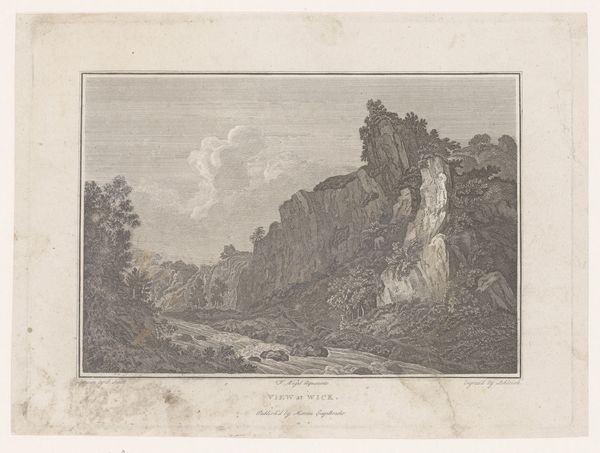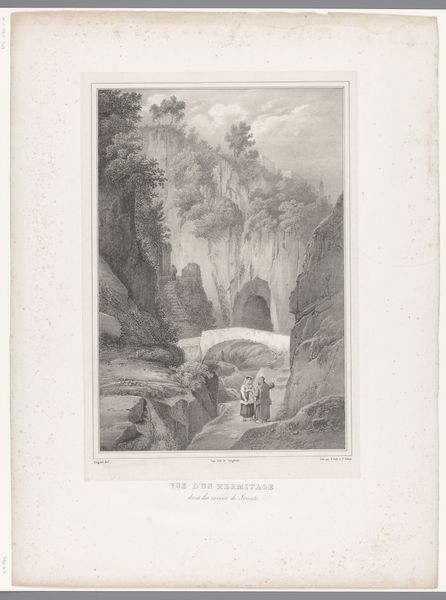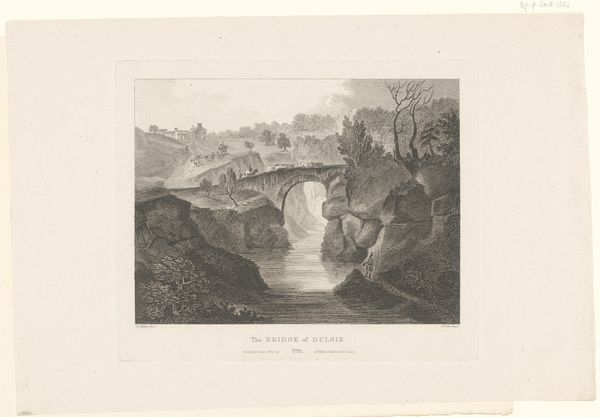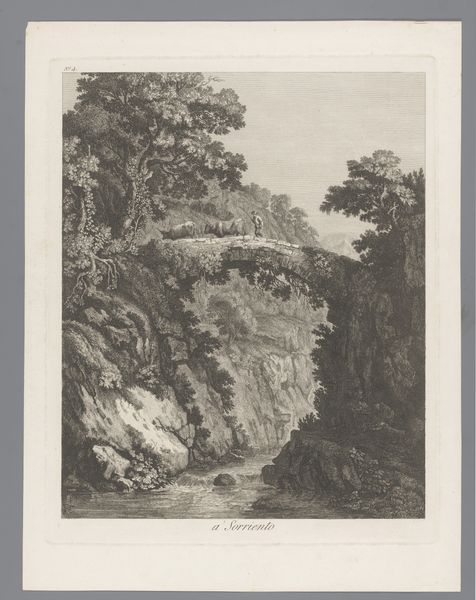
drawing, print, paper, pencil, graphite, engraving
#
drawing
# print
#
pencil sketch
#
landscape
#
paper
#
romanticism
#
mountain
#
pencil
#
line
#
graphite
#
cityscape
#
engraving
#
watercolor
Dimensions: height 490 mm, width 333 mm
Copyright: Rijks Museum: Open Domain
Editor: This is "View of the Bridge at Fourvoirie in the Chartreuse Mountains" by Constant Bourgeois, made around 1820. It looks like graphite and engraving on paper. The scene feels very enclosed, almost claustrophobic, with the mountains looming. What draws your eye to this print? Curator: It’s the construction of that bridge that commands attention. Look at how the materials, likely quarried stone, were transported and assembled in such a remote locale. How did the artist engage with, and perhaps even romanticize, the sheer labor required to erect such a structure in this landscape? The artist’s labor, too, of course – consider the accessibility of materials such as graphite and paper at the time. Were these commercially produced? Editor: I see what you mean! I was so focused on the overall aesthetic of the Romantic era mountainscape. The aqueduct’s wooden supports feel… fragile in comparison to the stone arch. Almost temporary. Curator: Exactly. Consider the lifespan of the materials, the relative cost and accessibility of those materials within Bourgeois’s social and economic environment. Were the local economies affected by their extraction, or manufacturing processes? Think about it – each material holds an inherent connection to networks of production and consumption. Editor: That is a great point! Thinking about where those supplies actually came from never occurred to me, but it makes a lot of sense. It shifts the focus from simply admiring the scenery to considering the socioeconomic factors that enabled both the bridge’s creation and its depiction. Curator: Precisely. This artwork encourages us to examine the systems behind its creation and subject. That gives us a deeper understanding of the period and its values. Editor: Thank you! I am now seeing this romantic view through a different lens, recognizing it as a moment shaped by material forces and labour.
Comments
No comments
Be the first to comment and join the conversation on the ultimate creative platform.
